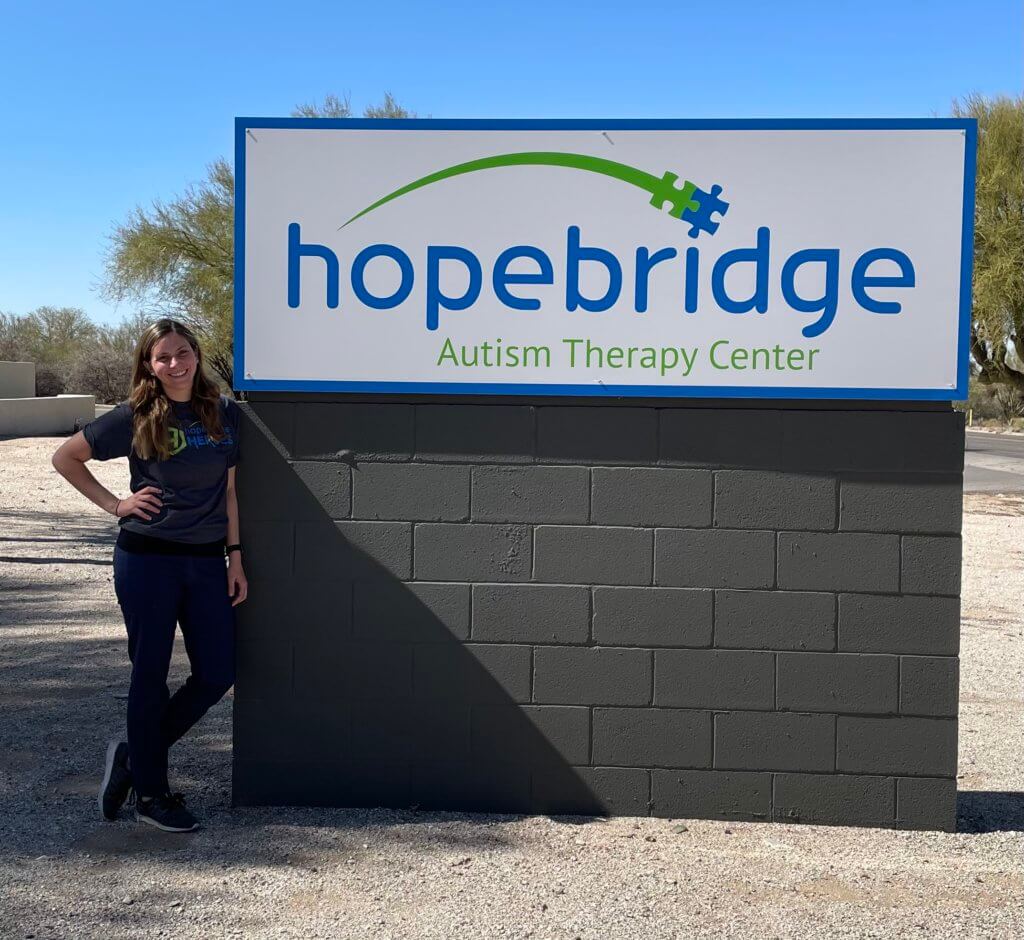How to Help a Child with Delays in Motor Skills and When to Get Support
March 03, 2021
March 03, 2021

Around the first year of a baby’s life, many parents look forward to their child’s first steps. It’s the big milestone that often graces Facebook feeds and is captured in Instagram Stories. While certainly exciting, walking is not the first – nor the most important – milestone parents should monitor for their children.
Starting from an infant’s earliest days and on through preschool, there are moments in motor development parents should notice. This can be a tough part of parenting, as each child is his or her own individual and moves at different paces. It is important to be aware of milestones, but families should not focus all their energies on meeting them within exact timelines.
What should families specifically look out for, and what movements – or lack thereof – may be a sign of a developmental delay or deficit that could benefit from more attention? And how will parents know if it is a delay or a sign of something more, like autism spectrum disorder (ASD)? It can be difficult to keep track, so we turned to Hopebridge Occupational Therapist Registered (OTR/L) Rachel Dorsch out of our autism therapy center in Tucson, Arizona for easy tips for parents to observe and enhance their child’s motor development skills, no matter the level.

One of the best things parents can do for their child’s motor development is establish an understanding of developmental milestones and get involved with their child’s daily occupations … also known as play!
At Hopebridge, we have a free checklist of developmental milestones to use as a guide, but there are also a variety of mobile apps available for parents. In addition to monitoring on their own, families should follow regular well-child checkup schedules with their pediatrician and highlight any concerns in development.
Not sure where to start? The stages of reflexes are some of the first areas to watch, as reflexes are a huge indicator of what an individual will be able to do later in life from a gross motor and fine motor perspective. You may remember the feeling of your newborn grasping your finger. This is an example of a primitive reflex. Not only should parents expect for this to occur, they should also watch for whether this pattern continues and doesn’t integrate. Eventually, the baby should have more motor control, meaning he or she will not always respond by immediately closing their hand around something.
Parents can also watch for their infant’s protective forward extension reflexes, which often emerge around five or six months of age. For example, if the baby is in a seated pattern and cannot catch his- or herself from falling forward, this is a sign that the reflex is not being integrated, which affects their postural control. While this is typically worked on from a physical therapy angle, this reflex is also significant from my occupational therapy standpoint, as it impacts daily occupations.
Voluntary movements are also key. Pay attention to when children start to roll, sit, creep, stand and yes, walk! It’s important to note that we look at the voluntary action of these milestones. For instance, a baby may roll at three months old, but make sure it is not just a reflex causing them to tip over rather than a concerted effort to roll.
Unusual responses to sensation is another area to monitor. While autism is a spectrum and challenges vary from person to person, one of the key signs of ASD is how an individual responds to senses. Many people think of these in terms of sound, sight and taste, but even crawling on the floor can have a textural response. Parents should bring up delays and behaviors with a physician or an occupational therapist so they can view it through the sensory lens, as well.
During evaluations with infants and toddlers, I may ask parents how much their child loves or hates tummy time. Almost all babies dislike tummy time at first, but they should be able to tolerate it for a bit. In my experience, many kids with autism hate tummy time or being swaddled because of the sensation, so parents often give up on it because their child cannot handle the sensory response, which leads to a meltdown. Parents’ own nerves then tend to go into hyperdrive – no one wants to cause their baby pain! – but infants should be able to integrate this sensation at least for a short time. If the child isn’t integrating it into their environment, this could be a sign that there is something more going on.
Beyond delays or missed milestones, there are other areas caregivers can survey. Watch the child’s play pattern behaviors—are they opposed to interacting with others? This may be attached to a social challenge. Other children with autism may display self-stimulatory behaviors such as hand-flapping or manipulating their fingers in an atypical way. These patterns can be another indicator of autism, and similar to some of the delays we discussed, they stem from the sensory component.
There is a standard timeline for each milestone, but we don’t want parents to constantly focus on them. Having strict timelines can put a disability into their minds as to what their child can and cannot do. Instead, we urge parents to use these timeframes and checklists as baselines.
Parents who have any worries over a child’s development should not wait to talk to a pediatrician and seek an evaluation with a provider like Hopebridge. Early intervention plays a pivotal role in helping children get on track for more fulfilling lives from the start, and it’s never too soon to seek services.
Parents should also never feel embarrassed or like a “bad parent” if they need to ask for help. Elements of parenting are difficult for everyone, plus, if a child is not experiencing society’s standards of what is considered “normal,” it can be even more stressful, especially in this age of social media comparisons. Caregivers should not be afraid to ask for assistance and should understand that each family must do what is best for their own lifestyle.
Part of why I love my role as an occupational therapist is because we look at kids from a holistic viewpoint. I can work with any child to help them improve, so it never hurts to take the first step toward an evaluation. Many babies and young children just need a little nudge in the right direction, whereas others may be experiencing signs and symptoms related to other disorders, such as autism. Either way, we can help.
Serving as an occupational therapist at Hopebridge is my first opportunity to work in a center that combines various disciplines into the program, including occupational therapy, applied behavior analysis (ABA therapy) and speech therapy.
One of the biggest benefits for families and team members alike is the behavior management, since ABA is such an important component of Hopebridge’s model. It is nice to be able to collaborate with other professionals to blend sensory-related goals and activities into a behavior program so a child can integrate them while also dealing with behaviors appropriately.
Having experts from multiple disciplines also aids in our patients’ progress. Prior to working at Hopebridge, I worked in an outpatient clinic where kids came in for one hour once or twice a week and may have also attended OT at school or home. Parents were often told so many varieties of coping strategies and skills from different angles that they couldn’t maintain what they needed to know. While it’s great to have all that knowledge, too much information or too many tactics may end up providing a child with too many sensory outlets at their exposure. Because of this, they are not able to focus on one that will work. At Hopebridge, all therapies fall under one structure, so our therapists can stay in close communication with each other and parents to utilize clear, effective strategies, rather than overwhelming anyone.
In my experience, the more severe the level of autism, the more sensory-processing deficits I’ve seen. Through our interdisciplinary model at Hopebridge, behavior analysts, speech-language pathologists and I often collaborate to make our kiddos’ reinforcements more sensory-based and add functionality.
First and foremost, I want to let parents know it will all be ok! Take a deep breath, try not to worry and make sure to have an outlet for yourself. Parents give so many resources to their kids, but they should have an outlet to express themselves as well. Do something for yourself so you can be a better parent for your child. As occupational therapists and other team members at Hopebridge, we are here to join your team. We are available to support you. We’ll help your child by pressing them a little bit more – so you don’t have to – and so they can build onto their skillset.
If parents want to focus on motor development at home playtime is a great way to start. One of our biggest hurdles during occupational therapy is getting children to play with toys functionally while developing fine motor skills. Here are some tips to help children with this during playtime:
If you are looking for more ideas, Hopebridge created a list of easy sensory activities you can take advantage of at home. If your child participates in therapy, their therapists and BCBA can also offer ideas for parents to provide more engaging playtime sessions.
The most important advice for parents goes back to where we started: seek help if you think your child could benefit from more support. Hopebridge’s mix of complementary services are available to help children with autism live life to its fullest. Fill out the online form to find out more about the programs or arrange an evaluation at one of our centers across the country.
*Informed consent was obtained from the participants in this article. This information should not be captured and reused without express permission from Hopebridge, LLC.